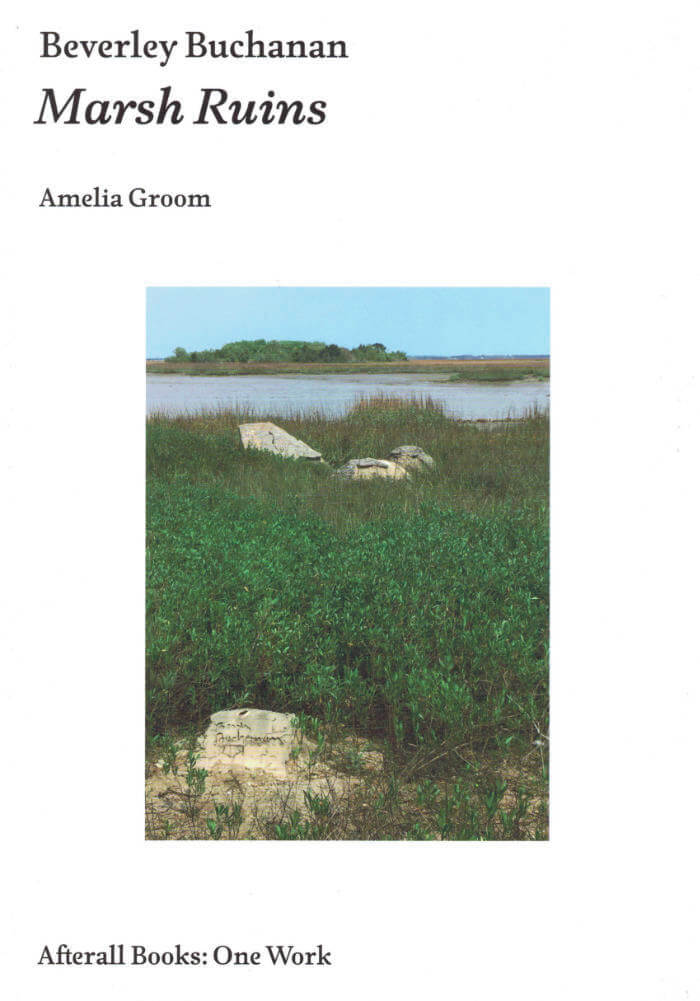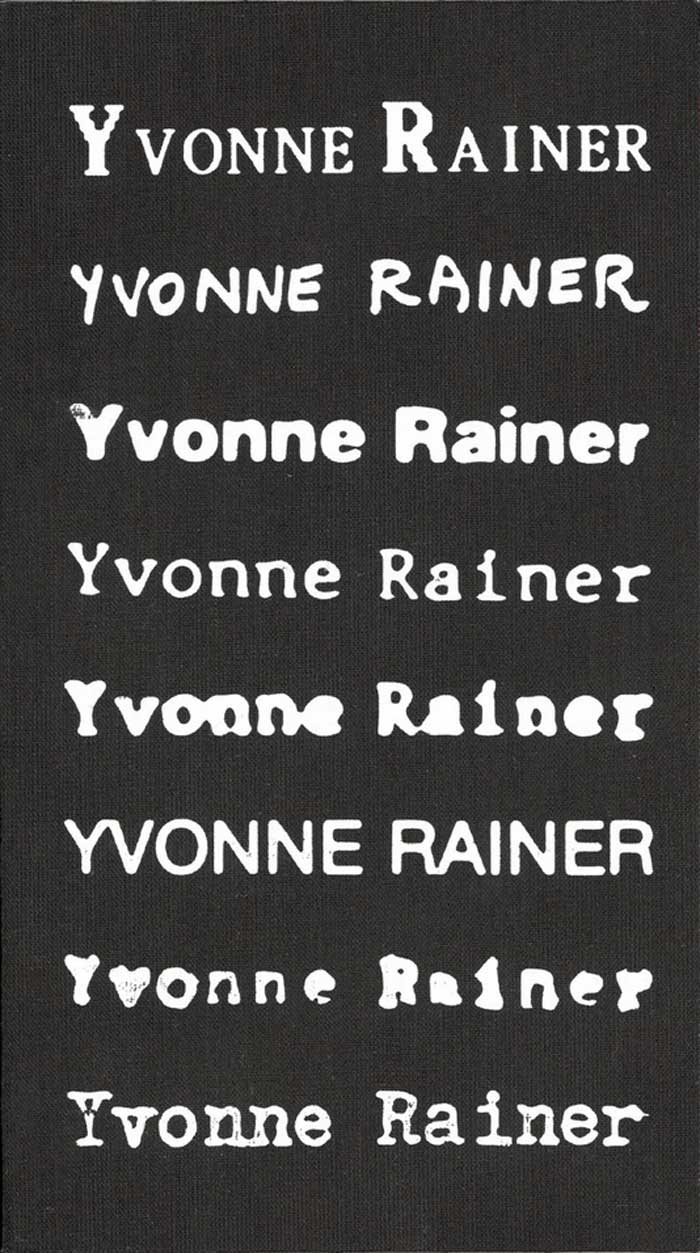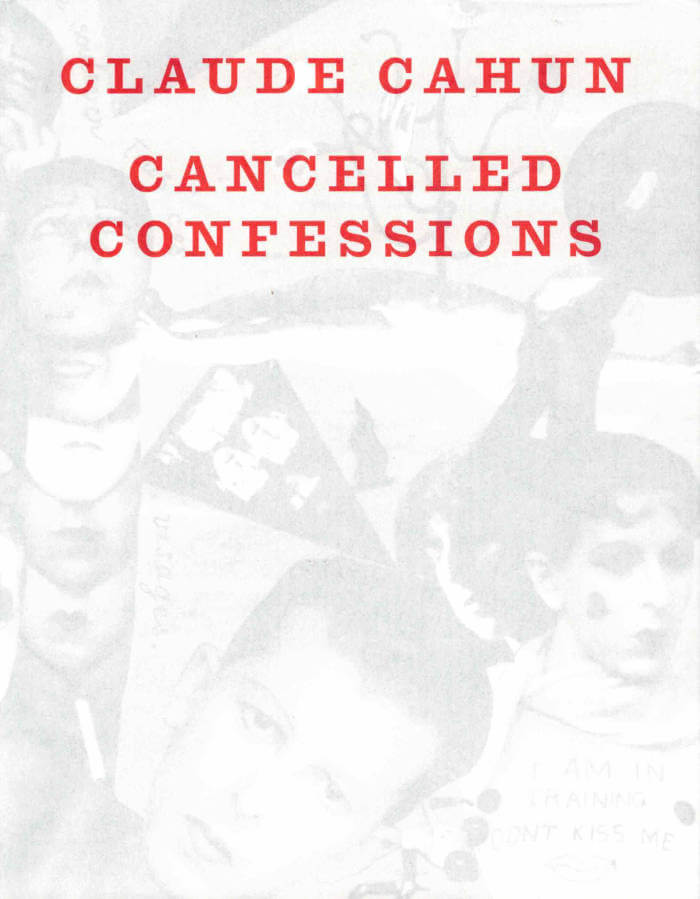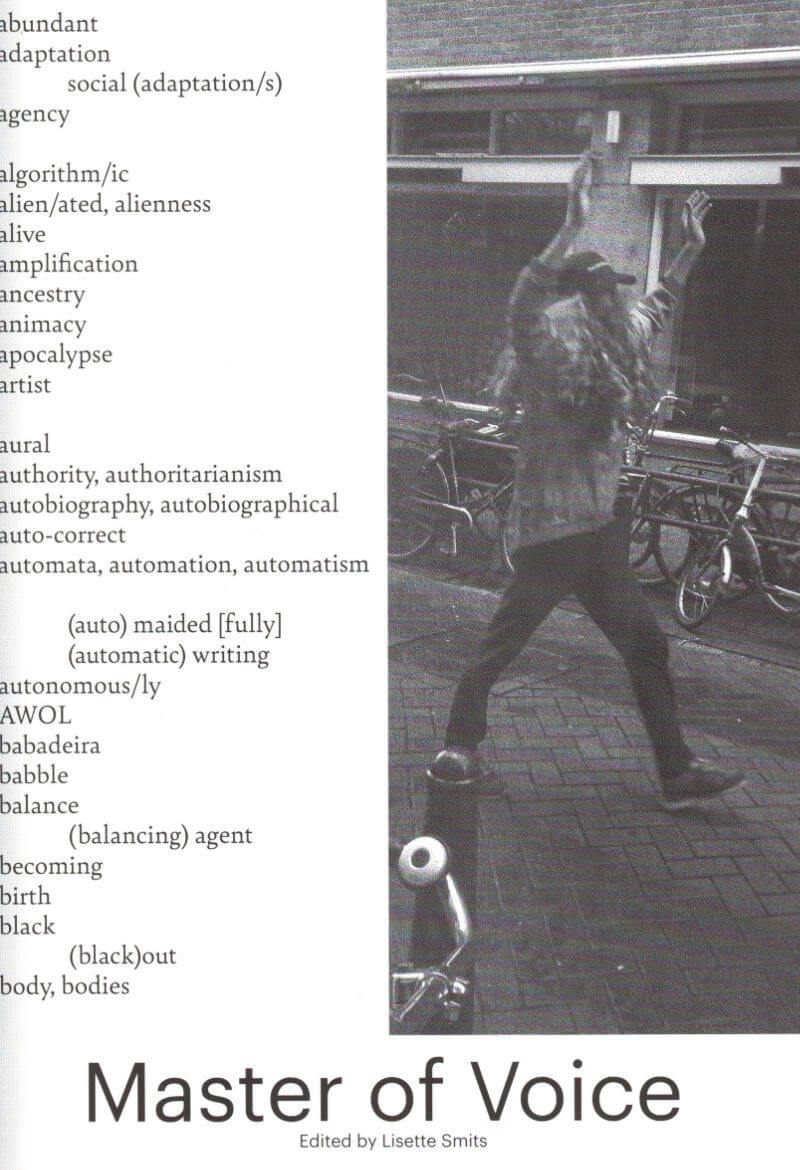Amelia Groom
Amelia Groom

Berverly Buchanan: Marsh Ruins
An illustrated examination of Beverly Buchanan's 1981 environmental sculpture, which exists in an ongoing state of ruination.
Beverly Buchanan's Marsh Ruins (1981) are large, solid mounds of cement and shell-based tabby concrete, yet their presence has always been elusive. Hiding in the tall grasses and brackish waters of the Marshes of Glynn, on the southeast coast of Georgia, the Marsh Ruins merge with their surroundings as they enact a curious and delicate tension between destruction and endurance. This volume offers an illustrated examination of Buchanan's environmental sculpture, which exists in an ongoing state of ruination.
And more

Terrassen – Privilege: An Yvonne Rainer Filmography
Published as appendix to the Yvonne Rainer Retrospective (November 6-28 2024), organised by Terrassen at Palads Cinema, Copenhagen.
Yvonne Rainer (b. 1934), one of the great American artists of her generation, revolutionised dance and choreography in the 1960s. Yet over the course of two decades - from the early 1970s to the mid-1990s - Rainer also directed seven feature films, each intensely discursive and consistently inviting critical reflection. Radically diverse and impossible to categorise, her films carve out their own space between documentary, fiction, performance, and the avant-garde. For decades, these films have been difficult to access, and when shown, they were often confined to small monitors in large museum settings. Now, newly restored in 4K, they were presented in a retrospective by Terrassen in 2024 - the first of its kind in Denmark.
The retrospective culminated in the publication of a new Yvonne Rainer filmography, with contributions from Babette Mangolte, Ursula Andkjær Olsen, Mira Adoumier, Emily Wardill, Emily LaBarge, Amelia Groom, Valérie Massadian, Iman Mohammed, Frida Sandström and Yvonne Rainer herself.

Cancelled Confessions
Aveux non Avenus is considered to be Claude Cahun’s masterpiece. Published in 1930 it defied description (it still does) and also showcased the incredible photomontages that Cahun and her lifelong partner, Marcel Moore, created together.
Cancelled Confessions reveals Claude Cahun to be a major surrealist writer and pioneering queer theorist almost a century ahead of her time.
Cahun and Moore’s appeal is wide and universal. They were adventurers in life as in art. Cahun famously terrified Andre Breton in the 1920s when she appeared in a Paris café with her head shaved and painted gold. Having moved to Jersey in 1938, Cahun and Moore waged a mischievous two-person resistance campaign against the occupying Nazi forces from 1940. Finally caught and imprisoned in 1944, they were sentenced to death in 1945, saved at the very last moment by the armistice.
With Amelia Groom Susan de Muth Claude Cahun Marcel Moore Pierre Mac Orlan François Leperlier
Designed by Joe Hales Sam Eccles

Burn & Gloom! Glow & Moon!
Retrospective monograph: a journey through over two decades of intersectional and queering practices in film, performance, sculpture, community work, and textiles.
In Daschner's textile-based works, threads are minimal yet highly visible, akin to the pinch needed to wake up from a dream. These works—as well as her collages—merge with her confronting yet inviting image politics: she cuts and pastes stories of love and pleasure, violence and resilience, death and rebirth.
The written contributions reflect on Katrina Daschner as part of a hardworking generation of queer artists and makers who have been responding to the major conceptual shifts and gender upheavals happening in contemporary art since the 1990s, especially in New York and London. They highlight Katrina Daschner's longstanding line of intersectional queer interest that continues to undermine (neo-)liberal, heteropatriarchal conceptions of sexuality, gender, subjectivity, and relationships
Edited by Övül Ö. Durmuşoğlu.
Texts by Amelia Groom, Tim Stüttgen; foreword by Övül Ö. Durmuşoğlu; interviews by Rike Frank.

Sibyl's Mouths
Mark Von Schlegell, Luzie Meyer and 3 more
Sibyl's Mouths is the most recent in a series of publications by Pure Fiction, a writing and performance group with shifting members active since 2011.
From February 12 to March 6, 2022, Pure Fiction presented an exhibition and performance program at the Kölnischer Kunstverein in Cologne titled "Shifting Theater: Sibyl's Mouths". The starting point was a collective reading of Mary Shelley's 1826 novel The Last Man, in which the narrator discovers a collection of scribbled oak leaves scattered in a cave outside Naples. Alleged prophecies of the Cumean Sibyl, the textual fragments inscribed on the leaves foretell the story of an epidemic that ravages the globe in the 2100's—a period where solitude, intimacy, and the perception of time is radically renegotiated.
Through a multiplicity of textual genres and writerly approaches, contributors examine the questions and forms that emerge from prophecy: the role of the voice in text, writing and performance; fragmentary heterogeneous narratives.
The mouth is consulted, not only as a mouthpiece or as a cavernous instrument for vocalization but as an essential part of the digestive tract. Processes in the gut, such as assimilation, excretion, and regurgitation involve multiple temporal directionalities, and may function as metaphorical gateways to intuitive truths.
Contributions by Rosa Aiello, Gerry Bibby, Coleman Collins, Ayanna Dozier, Annie Ernaux, Amelia Groom, Michèle Graf & Selina Grüter, Monilola Olayemi Ilupeju, Ellen Yeon Kim, Bitsy Knox, Dan Kwon, Erika Landström, Enad Marouf, Katrin Mayer, Aislinn McNamara, Kamila & Jasmina Metwaly, Luzie Meyer, Vera Palme, Theresa Patzschke, Georgia Sagri, Mahsa Saloor, Elif Saydam, Mark von Schlegell, Simon Speiser, Elaine Tam, C.S. Tolan, Mikhail Wassmer, Anna Zacharoff.

Event and Duration
Event and Duration is a collection of texts that offer various perspectives on the notions of ‘event and duration’, and suggest ways that time can be thought and measured otherwise. The selection of texts are drawn from the field of performance studies, philosophy, psychoanalysis, science fiction and the visual arts among others, all of which were read in If I Can’t Dance’s reading groups in Amsterdam, São Paulo and Toronto as part of the artistic programme VI – Event and Duration (2015–16).
Contributors: Octavia E. Butler, Paul Chan, Denise Ferreira da Silva, Elizabeth Freeman, Amelia Groom, The Invisible Committee, R.D. Laing, Henri Lefebvre, Jota Mombaça, José Esteban Muñoz, Peter Pál Pelbart, Paul B. Preciado; and artist pages by Becket MWN.
176 p, ills colour, 15 x 22 cm, pb, English, 2021

Deep Scroll
From theory-inspired poetry to technocratic desires concealed behind razorblades; from anarchy to mass-entertainment; from the collapse of binary distinctions of scale to post-human architecture; from the vibratory power of sound and vision to crowds, to the rejection of natural essentialism, materialist universality, and the haunted houses of the Anthropocene, all can be found in Deep Scroll. Edited by the artist Anne de Vries in collaboration with an AI text generator, this book offers an offline domain in which a network of artistic gestures and theoretical contributions are collected for your scrolling needs.
Comprising a range of scrolling pathways that serve as hyperlinks and references to past art projects, sketches, research, and documentation, this book overflows with texts and collages that generate ambiguous algorithms that fleetingly capture the focus of our configurations. All content smoothly flows, driving an accelerated state of correlation to the point of its collapse. Deep Scroll is designed to be reactive; it may induce an epiphany, or to leave the reader at the nadir of a cognitive abyss.
DEEP SCROLL is an artist publication produced in collaboration with AISSystem and Onomatopee. This limited edition contains contributions by Ariella Azoulay, Alain Badiou, Iain Hamilton Grant, Amelia Groom, Nicholas Korody, AI text generators, and many others.

Master of Voice
The question of the voice and its prominent role in our postindustrial society.
The (non)human voice has always been part of modern art, notably within performance art, sound art, and conceptual art. However, Master of Voice temporary master program at the Gerrit Rietveld Academy, Amsterdam, mutated from this history, examining the voice as a unique “discipline.” The graduate program's focus was on the (non)human voice as a means to an end or an end in itself within artistic practice. A special orientation of the curriculum, co-developed with a team of artists with a longstanding interest in the (non)human voice, is the voice in relation to technology and gender. This book captures a two-year-long period of research—of thinking, talking, sharing, learning, making, acting, and creating by students and teachers, artists, and other practitioners—to find possible answers and approaches to the question of the voice and its prominent role in our postindustrial society.
Contributions by Tyler Coburn, Angelo Custódio, Thom Driver, Paul Elliman, Amelia Groom, Miyuki Inoue, Danae Io, Jamila Johnson-Small, Bin Koh, Snejanka Mihaylova, Maria Montesi, MPA, Natasha Papadopoulou, Duncan Robertson, Marnie Slater, Cécile Tafanelli, Mavi Veloso, Geo Wyeth, Eva Šusová.
Graphic design: Juliette Lizotte.

Time is an Arrow, Error
Two clock-faces are staring at each other.
They are two sides of one thing, as different as they are the same.
They move as two bodies revolving around each other, into a tender embrace.
A kiss, made of time, in time.
Mirrored shape shifters, their hour-numbers climbing on each other's shoulders.
Running up against the limits of their own usefulness, clocklikeness.
A book by Katja Mater, with a text by Amelia Groom designed by Elisabeth Klement
79 clocks, 192 pages, open spine, 17 × 21 cm
Printed by Wilco Art Books on Arena White Rough by Fedrigoni